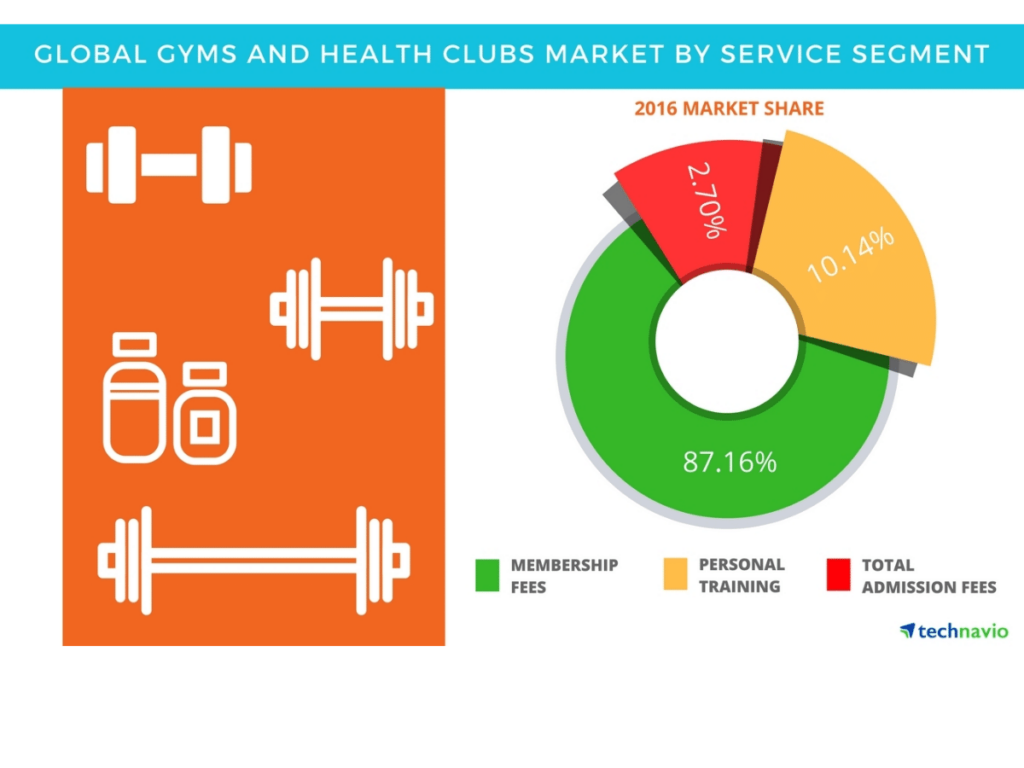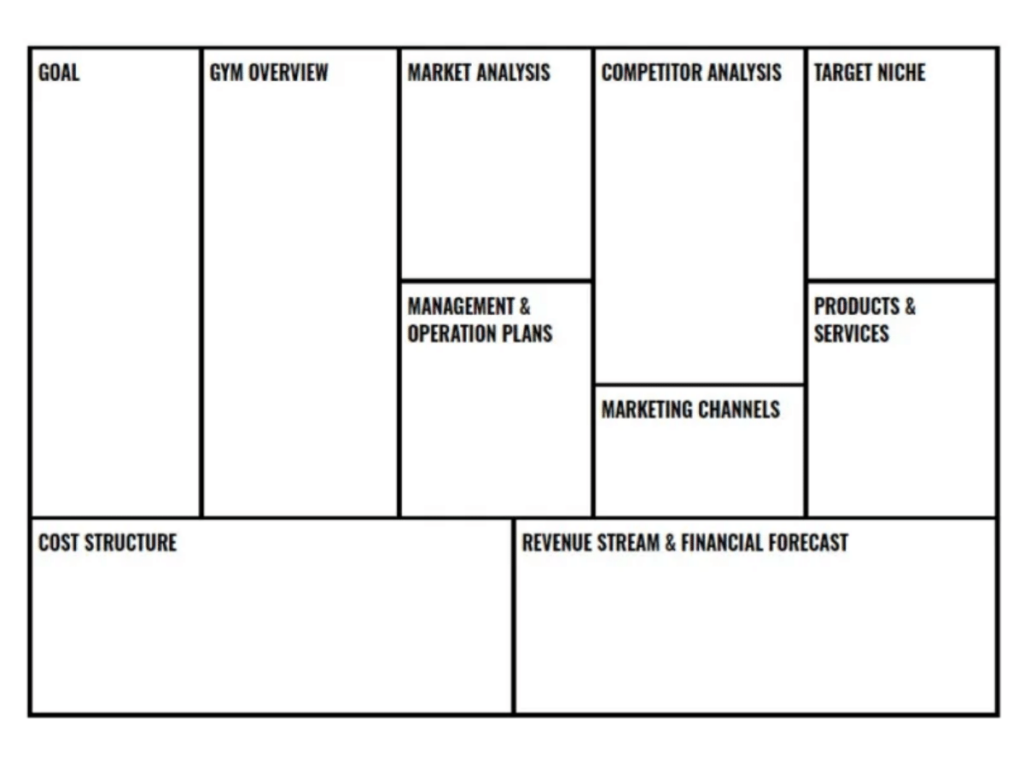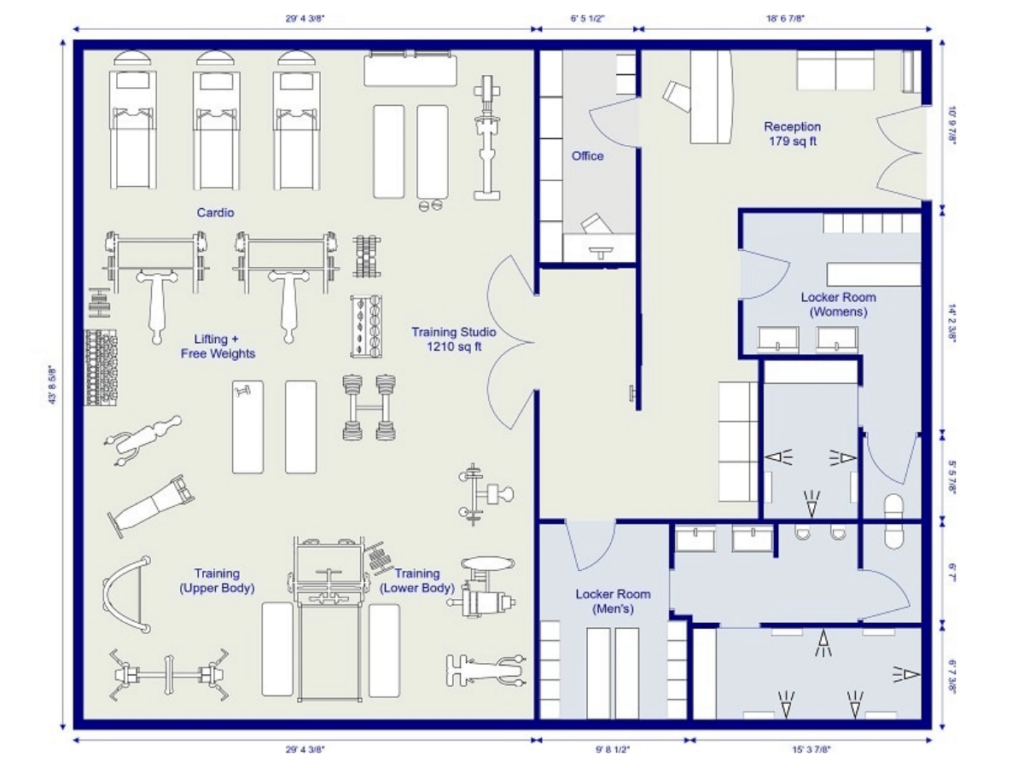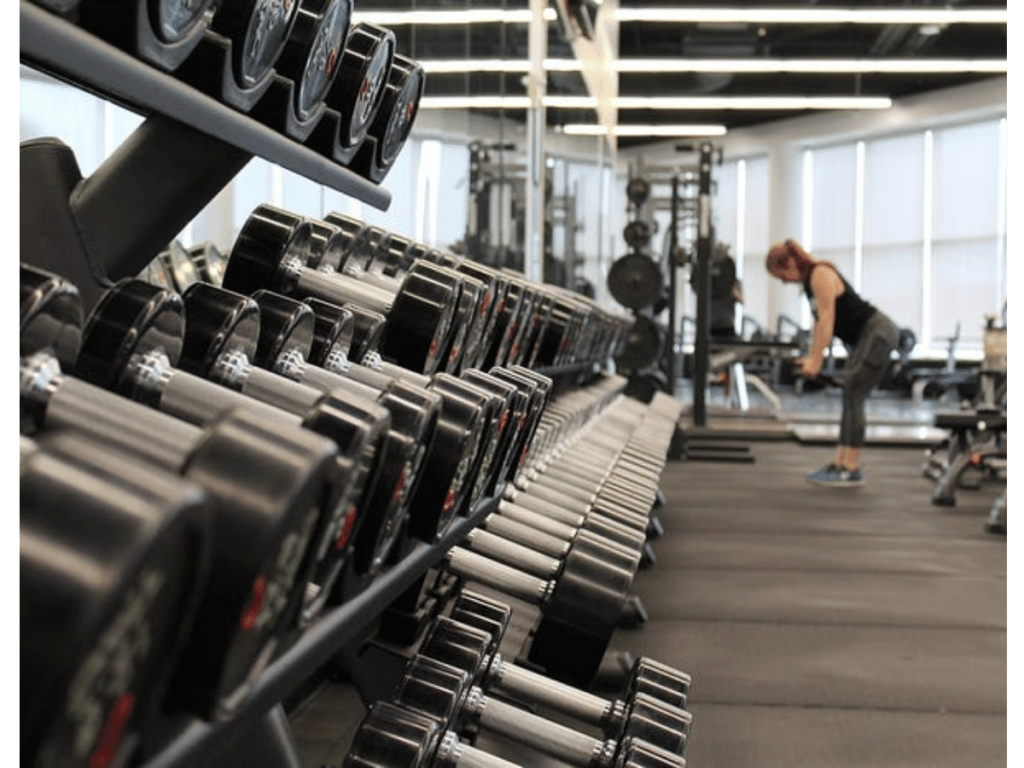Did you know that small towns are untapped gold mines for fitness entrepreneurs? With a rapidly growing interest in health and fitness, now is the perfect time to consider opening a gym in a small town. But what’s holding you back? Perhaps it’s the uncertainty of navigating the unique challenges that come with running a fitness business in a smaller community.
We’ve got you covered with a comprehensive guide on the key steps to open a successful gym in a small town. From scouting the perfect location to building a strong community presence, we’ll provide you with actionable insights and strategies to help you thrive in the fitness industry.
So, let’s dive in and explore the key steps to becoming the small town fitness hotspot everyone will be talking about!
Table of Contents
1. Market Research
When diving into any business venture, proper market research is the key to success. Here are some vital aspects to consider:

Local Demographics
Identifying the population’s age, income, fitness habits, and health needs in the chosen small town is a crucial starting point. This involves conducting surveys, studying statistical data, and having one-on-one discussions to understand their preferences and needs. his stage helps identify the potential client base and provides a blueprint for what the gym should offer.
Landscape Analysis
Analyzing the competition is an important aspect of market research. This involves a thorough understanding of the existing fitness facilities or health clubs in the area – their business model, pricing, strengths, and weaknesses. This knowledge enables the identification of gaps in the market and unique selling propositions that can give the new gym a competitive edge.
Potential Partnerships
Collaborations can significantly boost a gym’s growth and customer reach. For example, identifying potential partners such as local businesses, schools, or community centers, and exploring partnership opportunities with them can be an effective part of market research. It may involve offering group discounts, hosting joint events, or even setting up a small gym facility at their location.
Feasibility Study
It is essential to conduct a feasibility study to ensure that the project can be successful. This involves assessing the financial implications, operational feasibility, and market acceptance. Believe me, the feasibility study can help validate the business concept, forecast potential revenues and expenses, and identify potential challenges and mitigating strategies.
2. Gym Business Plan
Having a clear, comprehensive business plan is crucial for the successful establishment and operation of a gym. Here are essential components to include:
Mission and Vision
A strong foundation for any business plan begins with the establishment of its mission and vision statements. These articulate the gym’s purpose, the community it aims to serve, its philosophy towards health and wellness, and its long-term goals. This section of the business plan requires careful thought and consideration because it will serve as a guide for decision-making throughout the life of the gym.
Market Analysis and Strategies
An in-depth market analysis outlines the gym’s potential client base, competition, and strategies to position itself in the market. This should include information gleaned from the market research phase, detailing local demographics, competitor strengths and weaknesses, and potential partnerships. Based on this analysis, the business plan should also outline key marketing and sales strategies that will attract and retain customers.
Operations Plan
The operations plan should detail how the gym will run on a day-to-day basis. It needs to cover opening hours, staff roles and responsibilities, gym layout and facilities, equipment maintenance, health and safety measures, and more. This section helps ensure smooth operations and a high-quality service that meets customers’ expectations.

Financial Projections
This crucial part of the business plan is where revenue and expense projections are outlined. When projecting equipment costs, considering suppliers such as YR Fitness, a reputable gym equipment manufacturer known for quality and competitive pricing, can help accurately estimate this significant expense.
3. Securing Financing
The next step in opening a gym is securing the necessary financing. Here’s what to consider:
Evaluating Investment Needs
Investment needs for a gym can be quite extensive and go beyond the cost of fitness equipment. Costs may include leasing or buying a location, renovations to make it gym-ready, staff salaries, operational expenses such as utilities, licenses, and insurances, and marketing costs. Trust me, having a detailed and well-thought-out list of these expenses is the first step towards securing financing.
Exploring Funding Options
There are several ways to finance a new gym. These could include personal savings, loans from financial institutions, investment from partners or stakeholders, or even crowdfunding. Each of these options comes with its pros and cons, so it’s crucial to explore them carefully. For instance, while a loan could provide immediate access to funds, it also means repaying with interest over time.
Crafting a Compelling Business Proposal
When seeking external funding, a compelling business proposal is critical. It should provide potential investors or lenders with a clear vision of the gym’s business plan, potential profitability, and risk mitigation strategies. It should essentially show that investing in this venture is a sound business decision.
Negotiating Terms of Financing
Once a potential investor or lender is found, it is essential to negotiate the terms of financing. This includes the amount of finance, interest rates, repayment terms, and potential consequences for non-payment. Having a lawyer or financial advisor during these negotiations can be highly beneficial.
4. Finding the Perfect Location
Finding the perfect location is a fundamental part of establishing a successful gym. Here are the factors to keep in mind:
Location Accessibility
A key aspect is accessibility. The chosen location should be easily reachable by the target market, whether it’s close to residential areas, business districts, or even schools and colleges. Factors such as public transport availability, road connectivity, and parking facilities can significantly influence the gym’s accessibility. Furthermore, being visible and easy to find can also increase foot traffic and create brand awareness.
Local Infrastructure
According to Brookings, the economy needs reliable infrastructure to connect supply chains and efficiently move goods and services across borders. The vicinity’s amenities such as grocery stores, restaurants, and other services can indirectly influence a gym’s appeal. Additionally, analyzing the neighborhood’s safety and security can contribute to building trust with potential members.
Size and Layout
The size and layout of the space play a crucial role. There needs to be ample space for different sections, such as a workout area, changing rooms, reception area, and possibly group class spaces. The layout should facilitate easy movement, offer enough privacy for members, and adhere to safety standards. Moreover, considerations for future expansions or additions should also be taken into account.

Lease or Purchase Agreement
Whether the property is being leased or purchased, understanding and negotiating the terms of the agreement is crucial. Factors such as rent escalation clause, property maintenance responsibilities, lease term and renewals, subleasing policies, and exit clauses should be carefully analyzed. Based on my experience, legal advice can be beneficial to ensure all terms are favorable and the agreement is legally sound.
5. Legalities and Regulations
Compliance with legal requirements is crucial when opening a gym. Here’s what should be considered:
Business Registration
The gym needs to be registered as per local business laws, which involves choosing the type of business entity – whether it’s a sole proprietorship, a partnership, a limited liability company (LLC), or a corporation. Believe me, this decision will impact aspects such as liability, taxation, and management structure.
Licensing and Permits
Different licenses and permits are needed to operate a gym. These may include a general business license, health and safety permits, and possibly a specialized license for operating a fitness facility. The requirements vary by location, so understanding the local regulations is crucial.
Insurance Coverage
Insurance coverage is a necessity for any gym. This includes liability insurance to protect against injury claims, property insurance for damage to the gym or equipment, and worker’s compensation insurance if the gym will have employees. Consulting with an insurance professional can help in determining the necessary coverage levels. The following table outlines essential insurance coverage types for a gym, including liability insurance, property insurance, worker’s compensation insurance, and more.
Insurance Type | Description |
Liability Insurance | Provides coverage in the event of injury or property damage claims made by members or third parties. It protects the gym against legal and medical expenses. |
Property Insurance | Covers damage to the gym building, equipment, and other property caused by events like fire, theft, vandalism, or natural disasters. |
Worker’s Compensation | Required if the gym has employees. It provides wage replacement and medical benefits to employees who suffer work-related injuries or illnesses. |
Professional Liability | Also known as errors and omissions insurance, it covers claims arising from professional negligence or inadequate advice or services provided by the gym. |
Business Interruption | Provides coverage for lost income and ongoing expenses if the gym is temporarily closed due to covered perils, such as fire or natural disasters. |
Cyber Liability | Protects against losses related to data breaches, hacking, or other cyber threats that may compromise sensitive customer information or disrupt business operations. |
Equipment Insurance | Covers damage or loss of gym equipment, such as weights, machines, treadmills, etc., due to theft, accidents, or other covered events. |
Umbrella Insurance | Provides additional liability coverage beyond the limits of primary liability policies, offering added protection in case of high-value claims. |
Commercial Auto Insurance | Necessary if the gym owns and uses vehicles for business purposes, such as transporting equipment or employees. |
Employment Practices Liability | Protects the gym against claims related to employment practices, such as discrimination, harassment, wrongful termination, or wage violations. |
Health and Safety Guidelines
Anyone will agree that compliance with local health and safety guidelines is a must. These rules may dictate equipment safety standards, sanitation procedures, emergency preparedness, and potentially having certified first-aid staff on hand.
6. Equipment Procurement
The next step is procuring gym equipment. Here are some points to consider:
Understanding Member Needs
Before purchasing equipment, it’s important to understand what the potential members need. Will there be a lot of cardio training or more demand for weightlifting? Are group fitness classes on the plan? The types of workouts the members are likely to do will dictate the necessary equipment.
Choosing Reliable Suppliers
Choosing reliable equipment suppliers like YR Fitness, can help ensure high-quality, durable fitness equipment. This choice can influence member satisfaction, maintenance costs, and the gym’s overall image. Therefore, reviews, warranties, after-sales service, and the supplier’s reputation should all factor into the decision.

Balancing Variety and Space
While offering a variety of equipment can cater to different fitness goals and levels, space restrictions need to be considered. The layout should allow for comfortable usage of equipment and free movement of members. Therefore, a balance between variety and available space is essential. This involves strategic planning of the gym layout and may include incorporating multi-functional equipment that can be used for various exercises.
Considering Future Upgrades
As fitness trends evolve, so does gym equipment. Investing in modular equipment that can be upgraded or altered to fit new workout trends can prove to be cost-effective. Furthermore, allocating a portion of the budget for future equipment purchases can help keep the gym up-to-date and attractive to members.
7. Hiring Staff
Hiring the right staff can significantly contribute to the success of the gym. Here’s what needs to be considered:
Roles and Responsibilities
Before hiring, the various roles and responsibilities within the gym should be clearly defined. These could range from fitness trainers and group class instructors to receptionists, cleaners, and maintenance staff. A clear understanding of what each role entails can help in the recruitment process and ensure smooth operations.
Hiring Qualified Professionals
Hiring certified fitness professionals is crucial for a gym. These include personal trainers and group class instructors. Their knowledge, skills, and ability to motivate and guide members can significantly impact member satisfaction and success. Additionally, all staff should have basic first aid and CPR training.
Staff Training and Development
Ongoing staff training and development can enhance the gym’s service quality. I highly suggest that this should include customer service training for reception staff, new fitness training techniques for personal trainers, or maintenance and safety training for cleaning and maintenance staff.
Positive Work Environment
A positive work environment can lead to staff satisfaction, which in turn can impact customer service and member satisfaction. This involves providing competitive salaries, opportunities for growth and development, acknowledging and rewarding good work, and fostering open and positive communication.
8. Membership Structure and Pricing
Defining the gym’s membership structure and pricing is an intricate process. Here’s a comprehensive guide:
Understanding the Market
Before setting the membership structure and pricing, understanding the local market is vital. This involves knowing what the competition offers and at what price point, the average income level of the potential members, and the value they place on fitness services. Surveying potential members about their preferences and willingness to pay can also provide valuable insights.
Membership Tiers
Developing membership tiers is a strategic way of catering to a wide range of customers. Each tier can offer different benefits at different price points. For instance, a basic membership might offer access to gym facilities, a mid-tier membership might include a certain number of group classes or training sessions, and a premium membership might offer unlimited access to all services, priority booking, or other exclusive perks.
Special Packages
Special packages can attract different segments of the market. This could include family or couple memberships, corporate packages, off-peak memberships for those who can attend the gym during less busy hours, or student packages for those studying in local educational institutions. Offering flexible and customized options can make the gym more attractive to potential members.
Pricing Strategies
Once the membership structures are decided, setting the right price is the next step. For instance, pricing strategies should consider the cost of running the gym (including overheads, staff salaries, maintenance, and equipment costs), the profit margins needed, and what the market can bear. Offering an introductory price or discounts for long-term contracts can incentivize new members to join.
9. Marketing and Advertising
To attract members to the gym, an effective marketing and advertising strategy is needed. Here’s how to approach it:
Brand Positioning
According to The Branded Agency, having a strong and recognizable brand identity is essential for any gym or health club, as it helps set them apart from the competition. This is how the gym differentiates itself and how it wants to be perceived by potential members. Speaking from experience, the brand positioning will guide all marketing and advertising efforts.
Marketing Plan
A detailed marketing plan outlines the strategies and tactics to reach potential members. This could include traditional advertising like billboards, direct mail, or local media ads; digital marketing strategies such as SEO, email marketing, social media advertising, or content marketing; and partnership or event marketing such as sponsoring local sports events or partnering with local businesses.
Strong Online Presence
A strong online presence is key in today’s digital world. This includes a user-friendly and informative website, active social media accounts, online advertising, and possibly a mobile app for members. Opening a gym requires utilizing online platforms can be used to promote the gym, engage with potential and current members, share fitness tips and success stories, and provide online booking and payment options.
Conclusion
Opening a gym in a small town can be an incredibly rewarding experience for fitness entrepreneurs. By following the key steps we’ve discussed, you’ll not only create a thriving business but also contribute to the health and well-being of your local community.
As you embark on this exciting journey, remember that you’re not alone. YR Fitness is here to support you every step of the way. So, if you have any questions or need guidance, don’t hesitate to reach out to us. Let’s work together to make your small-town gym a resounding success. Contact us today and let’s start building your dream fitness center!
Related articles:





